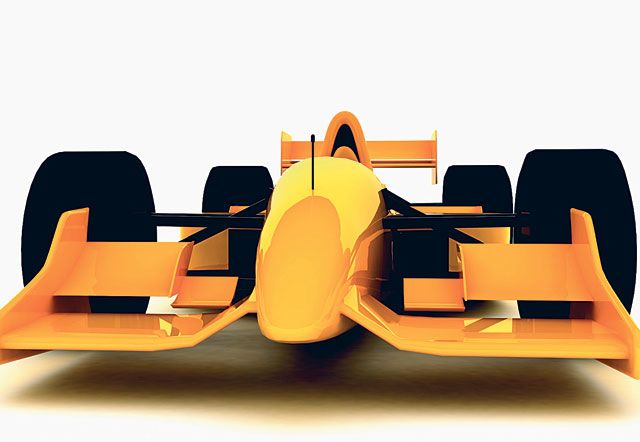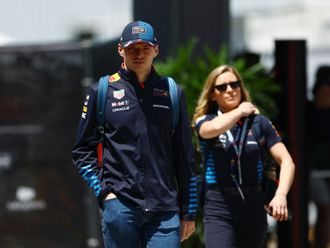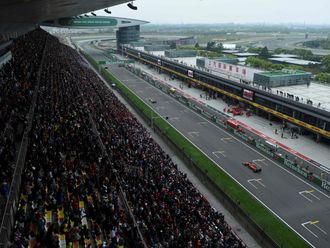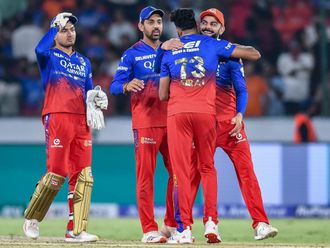When the Formula One showpiece switches continents for its shows, the star performers, the priceless cars are cossetted with first-class consideration in a squadron of private jets.
And rightly so. When the cargo is valued in multi-millions and the reliance for the spectacle for a 600-million audience worldwide is dependent on their safe arrival those charged with the responsibility carry a heavy burden.
DHL, the global delivery service, won the contract to transport all the F1 paraphenalia, from hospitality area serviettes, coffee cups and furniture to chassis and engine parts.
In all it is reckoned that each of the ten teams has airlifted 20,000 essential items — 5,000 of them alone are engine components — to each flyaway Grand Prix, the far-flung venues beyond Europe.
And the arduous task of overseeing the mass exodus of equipment has been delegated to a specialised unit of 30 DHL logistics officers who assemble either at an airport near London or another outside Milan, Italy, to check in each item of the gear to be shifted upwards of 10,000 miles.
Eye for detail
Each has an eighty-page document detailing everything from a 1mm screw to the carbon-fibre monocoque.
When they have finally ticked off their check-list and the three Jumbo 747 transport jets have lumbered into the sky heading, say for Australia from the UK, they will have marked up a total of 300 tons of materials.
Vast terraces of drawers holding spare parts and the tools to fit them, essential telemetry, hundreds of radios and TVs, and thousands of bottles of water for the crews, jam the gaps between the cartons of £1 million (Dh5.6 million) cars.
The load the planes are carrying, with the 20 cars neatly stacked in secure and padded racks on top of each other in specially designed damage-proof containers, would fill at least 100 trucks.
That's the way they are usually carried across Europe in transporters, specially-bought left-hand drive to meet Continental road rules. The DHL experts will also have noted regulations applicable to the intended landing zone to prevent any last minute hitches ... Japan, for instance, forbids the import of food. Australia, Malaysia and China don't allow wood products to enter their countries.
Demand for punctuality
Grand Prix teams' demands for punctuality, where lost time means lost races, insist that DHL delivers it precious cargo nine days before a race to give the garage crews ample time to set up the cars and the back-up technicians their electronic panels.
In the unlikely event that anything has been overlooked and carelessly left behind DHL guarantee to have it flown in within 24 hours — the same goes for an urgent replacement part, damage suffered in a crash, that the team may not be carrying. DHL, with its annual turnover of £25 billion operates a network of 220 countries and employs more than 60,000. Their motto is :Anything. Anytime. Any place.
And F1 ringmaster Bernie Ecclestone who organised the tie-up with F1 says: "That's what they boast. And that's what they do."
DHL, anxious to firm-up even more their connections with F1, award an annual trophy for the Grand Prix driver with the most number of fastest laps. The first one was clinched by Kimi Raikkonen in the Ferrari.
"The DHL Fastest Lap Trophy recognises and reflects the values they offer and it is the very thing we in F1 have as our mantra ... speed allied to fine organisation," added Ecclestone.
The writer is a motor sport expert based in England
F1 Logistics
1. For Formula One racing teams one of the biggest battles of a race weekend or testing session will be over before a car even turns a wheel: the vast logistical effort required to get all of the team's. equipment to the circuit — so vast, in fact, that the sport has its very own Official Logistics Partner, DHL. Indeed each team competing in the FIA Formula One World Championship now travels something like 160,000 kilometres (100,000 miles) a year between races and test sessions.
2. Nor is the logistical effort as simple as merely getting people and equipment in place. Hotel accommodation must also be found and booked (a team can require anything up to 100 rooms), hire cars must be sourced and the team's facilities at the circuit — from the pit garage equipment to the drivers' motorhomes and the paddock corporate hospitality units must all be in place. Almost equally important, in this digital age, are the secure data links that connect the team to its base, enabling telemetry and other data to be sent directly back (which in turn allows engineers to study any potential problems, even while the race is running.) All-in-all, an enormous task.
3. For the European rounds of the championship most of a team's equipment will travel by road, in the liveried articulated lorries which are such a familiar sight in race paddocks across the continent. All of the race equipment required for the weekend will be loaded in these: cars, spare parts and tools. Most teams will ‘pack' three cars, one spare chassis and several spare engines plus a full kit of other spares. Tyres, fuel and certain other equipment are brought separately by technical partners and local contractors.
4. For the non-European ‘flyaway' races the logistical effort is considerably more complicated (all Formula One teams being resident in Europe at the moment) as equipment has to be flown out on transport planes. Rather than use conventional aircraft containers, teams have created their own specially designed cargo crates, designed to fill all available space in the planes' holds. At present most of the teams use cargo planes chartered by Formula One Management (FOM) which fly from London and Munich to wherever the race is being held. In the case of successive flyaway races there is very little time between them to allow the teams' equipment to be brought ‘home'.
5. As the number of races outside Europe continues to expand, so the logistical effort required to transport the teams and their equipment will expand alongside it. Already the amount of transport required for a season of Formula One has been described, only half-jokingly, as being similar to that needed for a medium-sized military campaign.













